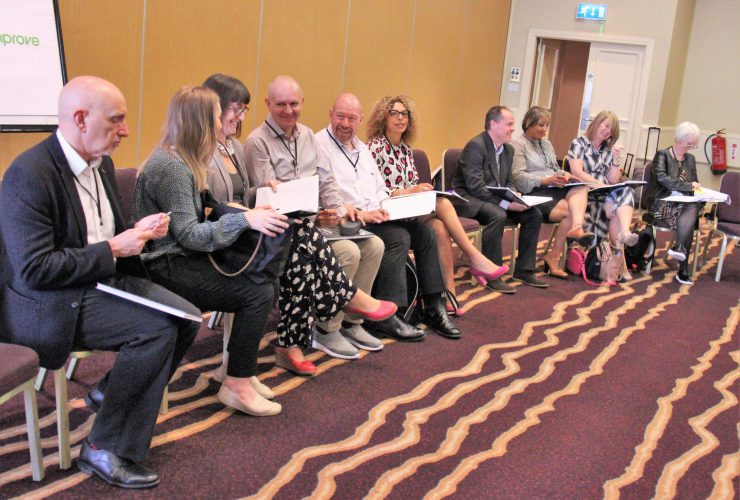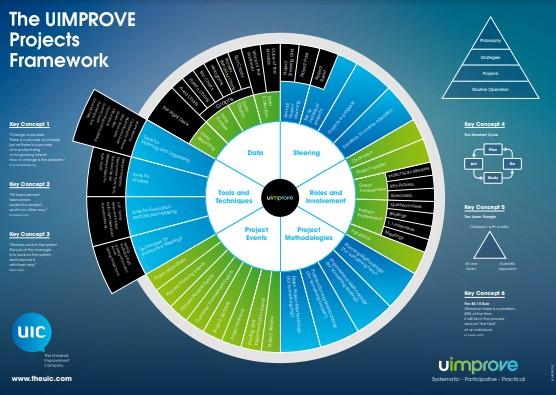10 Tips for Top Team Meetings
Do Team Meetings fill you with eager anticipation or with weary dread? Are they a sacred space to collectively think and do, or an ad hoc series of individual updates?
Meetings culture is not the sexiest topic, but it can be a real bellwether for what is going on organisationally and how proactively leaders are managing organisational capacity. Well-run Team Meetings can make a radical difference to team effectiveness, employee experience and the way work gets done.
Read on to find out more about how to turn our Team Meetings from talking shops into working shops.

Tip 1: Create a Balanced Agenda
A good Team Meeting agenda strikes the right balance between standard agenda items and the flexibility to include member-driven topics.
Taking a systems-based approach not only ensures you cover all bases, it also embeds an understanding of your service offering end-to-end within your team and challenges silo thinking.
Key topics should include:
(1) Customer headlines – what are they saying? What data do we have? Who’s new? Who have we lost?
(2) Suppliers/contracts – reporting by exception can often be helpful here. No point dwelling on relationships that are ticking over nicely.
(3) Process performance – what’s the data telling us? Is everything under control? Anything going wrong which needs addressing? Anything improving? Anything declining?
Routinely reviewing the above data in advance should then identify potential topics for Real Work later in the agenda. There may be specific Team Members you call upon to lead these agenda items.
For those applying UIMPROVE, a Project Steering Grid review is recommended usually every other Team Meeting (or more frequently if needed).
Tip 2: Member-Driven Topics
Most Team Leaders will have had the dispiriting feeling of sending a ‘call for agenda items’ e-mail straight into the void.
Setting the expectation that people submit and deliver their own agenda items delivers multiple benefits for both the team and individuals:
– It embeds a culture of participation
– It encourages Team Members to take ownership of problems, think constructively about solutions and work collaboratively with their team-mates to deliver these
– It builds confidence among more junior Team Members when it comes to speaking in front of a group
The best place to explore potential Team Meeting topics isn’t via e-mail, but through 1-1s, coffees and ‘water-cooler’ moments. Be alive to anything being discussed ‘offline’ (or on WhatsApp) that needs some constructive, transparent thinking applied to it.
Tip 3: Be clear about the purpose of each agenda item
If you are chairing the meeting, clearly articulate the purpose of each agenda item as part of your Preamble. Often, it will be appropriate to summarise the agenda item and link back to its purpose before you move on to the next item.
This stuff might sound pretty basic, but it gets easily missed and can make a radical difference to the effectiveness of meetings.
Tip 4: Structured participation as standard
One-way traffic serves no-one.
Briefing in a key policy change or a big-ticket project is usually a good idea, but without space for structured reflection and feedback, you risk venturing forth into the other dreaded void: ‘Any questions?’
Structured participation doesn’t have to be complicated. Depending on the size of your team, a quick bit of Pairwork asking people to jot down what stood out for them and their top 3 questions will do the trick.
Meatier topics may need a bit more scaffolding around the question structure, dependent on the purpose of the agenda item. UIMPROVE Facilitators can be really useful in helping you develop an effective remit for your agenda item – and for trickier/more complex topics, can facilitate the agenda (or the whole meeting) for you.
Tip 5: Focus on ‘Real Work’
Team meetings should be more than just information-sharing sessions; they should be platforms for actual problem-solving and decision-making.
This is where adequate preparation is vital. Again Facilitators can be a good sounding board here. They can help you determine the best structure to help you move Real Work forward.
For proponents of the 70:20:10 model, Team Meetings play a vital role in fostering learning and development. They provide the infrastructure in which 20% of our learning – through our interactions with others – can happen. This crosses over into the 70% when meetings allow us to actually do our jobs.

Tip 6: Rotating Chair
Consider rotating the chairing of your Team Meetings.
This is another excellent development opportunity for more junior Team Members and provides some variety from meeting-to-meeting.
Note that Chairs may need some coaching and advice on when to defer to the Team Leader e.g. in decision-making scenarios.
Tip 7: Minimise your use of tech (yes, even on-line)
Close the laptops. They are an instant barrier to participation.
Ensure phones are off and away.
There’s no radical science or bold theories here. They are forms of distraction.
An agenda projected onto a screen may be handy, and you may need a projector for data display or technical input.
But for notetaking, actions, etc – stick with Notebooks and Flipcharts. The benefits are both tangible (in terms of actionable outputs that are collectively and clearly defined, with clear ownership) and intangible (in terms of relationships and team dynamics).
Tip 8: Get the room right (yes, even on-line)
The UIC’s recommended layout of a U-shape of chairs with no tables does occasionally raise a few eyebrows.
What’s nice about this layout, however, is that you can actually see everyone’s eyebrows (and hopefully a fair bit more) rather than being stuck around a Board Room table and craning to see participants or not seeing them at all.
For on-line meetings, think about ground rules when it comes to cameras, and explore the best tools and apps to foster participation.
Tip 9: Actionable Outcomes
This is where individual note-taking matters.
Don’t rely on minutes to drive outcomes from your Team Meetings. Make it the norm that everyone has their Notebook open and makes a note of their own actions.
Couple this with capturing key actions and decisions on flipchart, photographing these and sharing them will create far greater shared ownership of actions than waiting for the unlucky minute-taker to write everything up and circulate it.
Tip 10: Meet less often, for more time, face-to-face
Evidence indicates that employees prefer to meet less often, for more time. The planning and preparation (by both Chair and participants) for an effective Team Meeting requires time and headspace. Meeting too regularly risks creating a culture of reactiveness and driving down employee satisfaction through meetings fatigue.
Standup Meetings
Stand-up meetings have become particularly fashionable over the past 5-10 years but are usually only appropriate in particular operational settings.
Their growth in popularity largely derives from the rise of Agile, which in turn has its roots in software development (see our blog on ‘What project methodology’ for more on origin stories).
For software developers, a short morning meeting to focus on tightly controlled work packages is entirely fitting for the nature of the work they do.
However, standups are not Team Meetings and some organisations have been guilty of conflating the two. This gives rise to an employee perception of meeting too frequently for a limited purpose, which in turn drives down perceptions of productivity and employee satisfaction.
On-line or face-to-face?
Many of our clients are still experimenting with the best hybrid-working model for them. This shift and the geographical dispersal of teams may necessitate meeting on-line.
However, all the anecdotal evidence we have heard from our clients suggests that teams should meet face-to-face at least once-a-quarter. The tangible and intangible benefits of meeting face-to-face are too numerable to mention. On-line meetings can enable teams to get things done. Collective reflection and relationship-building are much harder work.
Conclusion
In conclusion, transforming team meetings from mundane obligations to dynamic, productive sessions is crucial for organisational success. By implementing these 10 tips, you can revolutionize the way your team collaborates, solves problems, and drives progress. Remember, effective team meetings are not just about sharing information; they are about fostering a culture of participation, engagement, and collective action. In so doing, they should lift people’s game and get them focused on organisational goals and the things that matter to your customers.

Blog post written by Lucy O’Melia, Associate Consultant for the UIC.
Contact lucy@theuic.com to discuss all things teams, meetings and organisational improvement.
How is your team doing?
How improvement-focused is your team? Are they collaborating around your organisational goals or stuck in the weeds?
Get in touch for an informal chat about how the UIC can help build capacity and capability in your team through our training and facilitation activities.





